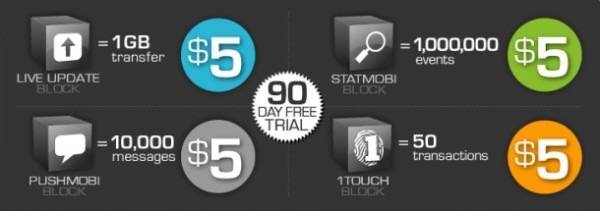The fact about HTML5 is that it enables every developer to use it for his own purposes. Those purposes can be fairly diverse — as of yet, no one really has a handle on “pure HTML5.” But as incomplete platforms go, it’s holding its own pretty well as an equalizing platform for other companies to achieve par against the mighty app stores of Apple and Android.

You’ve been reading Dan Rowinski’s reports on a company called appMobi, which has been building a cross-platform mobile development environment for iOS and Android together since the summer of last year. This morning the firm announced its alternative to an apps market client: a full-fledged browser that supports the components being leveraged atop appMobi’s platform.
You might be asking appMobi, if you were thinking about building a stand-alone browser anyway, then where’s the value in going with HTML5? Arguably, Adobe could have done the same thing. The reason it didn’t, Adobe standards principal Carl Cargill explained last month, was because Adobe perceives HTML5 as being standardized around browsers, rather than browsers around it. “Browsers consume HTML5 — that is, a Web browser reads an HTML5 document and then composes the document into a visible or audible display,” Cargill wrote. “Adobe’s primary focus is to check HTML5 for being ‘tool ready.'”
But Apple has its own idea of HTML5 as well, which does not open up iOS to any other apps distribution model other than the App Store. That makes Apple’s HTML5, at least for now, another means to deliver native apps. Microsoft’s forthcoming “Metro” platform for Windows 8 will be another, and RIM’s forthcoming BBX for PlayBook and its derivatives yet another.
While appMobi apps won’t be the polar opposite of native apps, they will be cross-platform and they will leverage Web apps developers’ existing skill sets. The MobiUs apps browser makes a compelling case: It doesn’t replace the App Store or the Android Market. Rather, it offers the user a way to use the Web in a form that’s compatible with the platforms and technologies appMobi wants to advance. There is indeed a business model here.
We’ve covered other HTML5 mobile apps markets here previously, one example being Strobe, which emerged from a project begun at Apple. If there are going to be multiple HTML5-oriented platforms in the world, they’ll need standout factors in order to distinguish themselves. AppMobi may have already lined these factors up:
1. Support for a higher-performance renderer that works like HTML5 Canvas. It’s called DirectCanvas, and it cannot pretend to be the same element as Canvas for HTML5 itself. But present-day Safari for iOS has been slow with Canvas, despite the fact that the whole idea originated with Safari to begin with. AppMobi’s alternative will be programmable using a subset (for now) of Canvas instructions, and will run in a subordinate context to the main window. That means instructions for DirectCanvas will have to be supplied through a separate script, but for developers accustomed to linking JavaScript files independently, that shouldn’t be too much of a burden. Canvas-style instructions will at least mean developers can easily transition from a “standard HTML5” context into an appMobi context without exports and imports.
2. Support for third-party games engines. Let’s face it, one forgotten reason that someone might want to build a mobile game is to have fun doing it, as opposed to deposing Zynga from its throne. The appeal of HTML5-oriented platforms like Scirra’s Construct 2 is that you can make something work with a little bit of object creation and a touch of occasional logic, rather than a massive production. Native apps platforms are more about assets packaging and installation, which may be the furthest thing from your 10-year-old’s mind when all she wants to do is make a guy bounce up and down on an undulating sea of pillows. If she could then make a game that her friend with an iPad could play, that might be all the incentive she needs.

3. A cloud-based live support platform that also serves as appMobi’s business model. The big question with apps stores is usually how much of a commission the proprietor intends to extract from each download. AppMobi’s business model comes not from royalties but from reselling use of its cloud platform (which in its original form is purchased from Amazon AWS), for use with the four main features that a developer requires. Billing is utility-style, essentially boiling down to 10¢ per end-user installation, and $5 per gigabyte of bandwidth used to transfer files, including over-the-air live updates without bothering the user. The PushMobi service is for any messaging the appMobi app may require, and yes, that does get charged to you (so you’ll want to consider how much bandwidth your user is likely to consume). StatMobi provides real-time analytics on what your users are downloading and how often they’re using your apps. These four components are all purchased through a Cloud Services Dashboard, where you can limit your monthly expenses to a stated maximum.
If there’s going to be more than one game in town, there needs to be compelling reasons why. HTML5 supporters should listen up, because it appears appMobi has come up with some.










